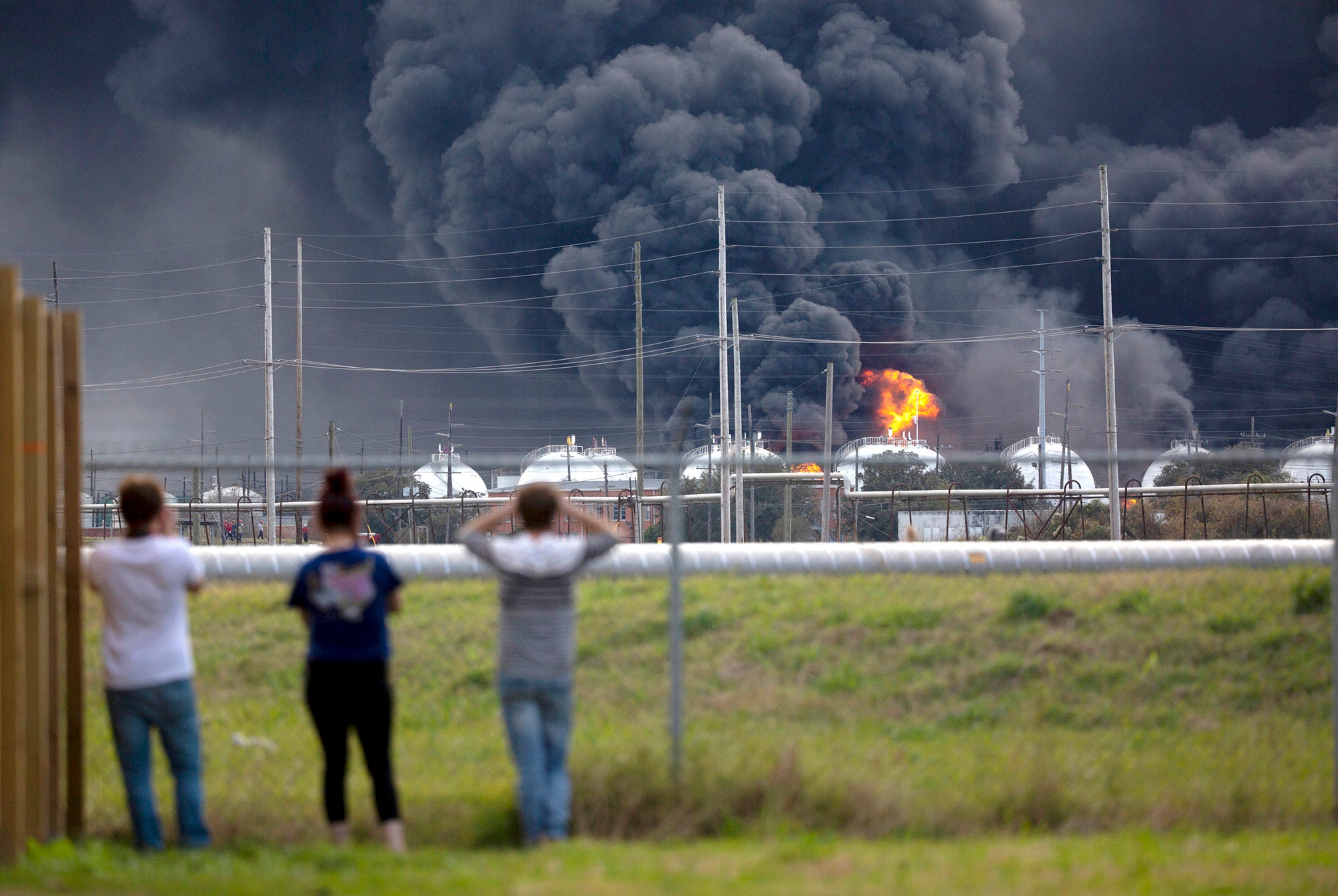EPA Strengthens Chemical Disaster Safeguards
Victory
—Nearly 180 million people live in the worst-case scenario zones for a chemical disaster
Contact
Today, the Environmental Protection Agency (EPA) announced final new safeguards and rules aimed at nearly 12,000 chemical plants operating under the Risk Management Program (RMP). These crucial measures are designed to mitigate risks of explosions, fires, and other hazardous industrial incidents, which frequently occur and harm fenceline communities nationwide.
The final rule mandates chemical facilities to account for extreme weather events like hurricanes and unprecedented flooding in their emergency plans, which have become more frequent and severe because of climate change. The new rule requires the most hazardous facilities to evaluate and implement safer technologies or other prevention measures. The safeguards also expand worker involvement in safety planning and disaster prevention and provide community notification of toxic emissions and greater access to certain hazard information for the most-affected communities..
“Chemical plants and refineries are dangerous, as frontline communities and workers know all too well. While there is certainly more that must be done to prevent chemical disasters, EPA’s rule is a major step towards ensuring that the most hazardous facilities implement safer technologies and provide greater public access to information,” said Kathleen Riley, attorney with Earthjustice. “We urge industry to implement these life-saving measures without delay.”
Nearly 180 million people live in the worst-case scenario zones for a chemical disaster, and one in three children go to a school in a chemical danger zone. Between 2004 and 2020, over 3,400 fires, explosions, or other chemical incidents have occurred at industrial facilities, and more than 2,400 of these have caused reported harm. On average, a fatal or life-threatening incident occurs every two-and-a-half days. The reported incidents are just the tip of the iceberg, as disasters are chronically underreported. Chemical facilities sometimes wait for as many as five years to report incidents to EPA.
The RMP regulates 11,760 facilities that use, store, or manage hazardous substances above certain threshold amounts. These facilities include chemical manufacturers, petroleum refineries, water treatment plants, industrial agriculture facilities, and pulp and paper mills. These facilities are disproportionately located near communities of color and lower-income communities across the country. Approximately one-third of these facilities — 3,856 — are in high climate-risk areas. Before today’s revisions, the RMP neither directly addressed climate change nor required facilities to protect people from the cascading effects of chemical releases stemming from extreme weather events, also known as “natech” incidents.
Following multiple fatal chemical disasters, in 2016 President Obama issued an executive order directing all agencies to improve chemical safety. EPA issued the final “Chemical Disaster Rule” in 2017. Shortly thereafter, the Trump administration delayed these revisions and then gutted them in a 2019 rule. Earthjustice and its clients sued in response to both actions, before the Biden administration revisited this suite of chemical safety requirements with today’s compromise rule.
Earthjustice clients include: The Union of Concerned Scientists, Environmental Integrity Project, Sierra Club, Coalition For A Safe Environment (Wilmington, CA), California Communities Against Toxics, Del Amo Action Committee, Louisiana Bucket Brigade, Air Alliance Houston, Community In-Power & Development Association (Port Arthur, TX), Texas Environmental Justice Advocacy Services, Clean Air Council (Philadelphia, PA), and Utah Physicians for a Healthy Environment.
For data and maps on recent chemical disasters, visit the Coalition to Prevent Chemical Disasters website.

Additional Resources
About Earthjustice
Earthjustice is the premier nonprofit environmental law organization. We wield the power of law and the strength of partnership to protect people's health, to preserve magnificent places and wildlife, to advance clean energy, and to combat climate change. We are here because the earth needs a good lawyer.